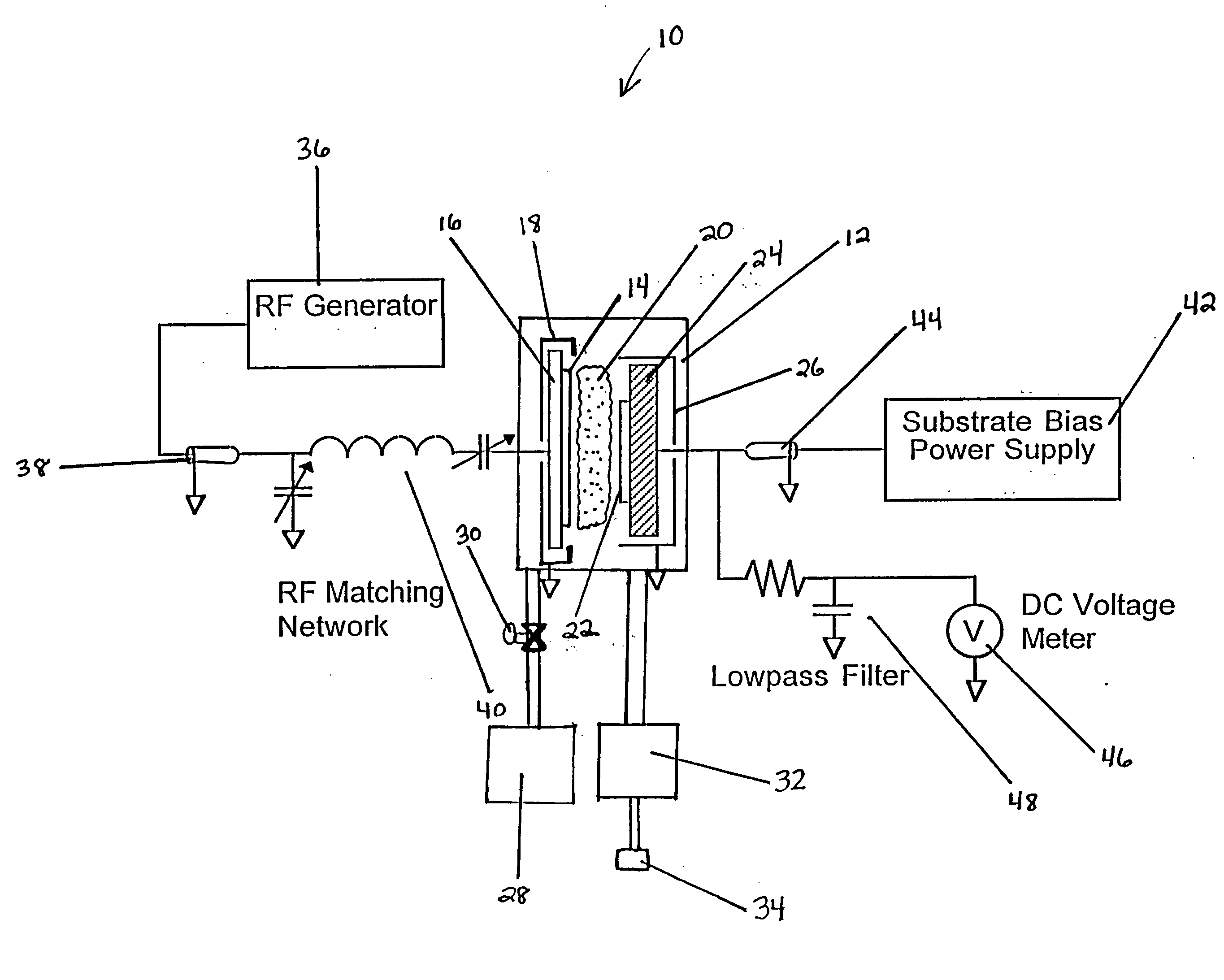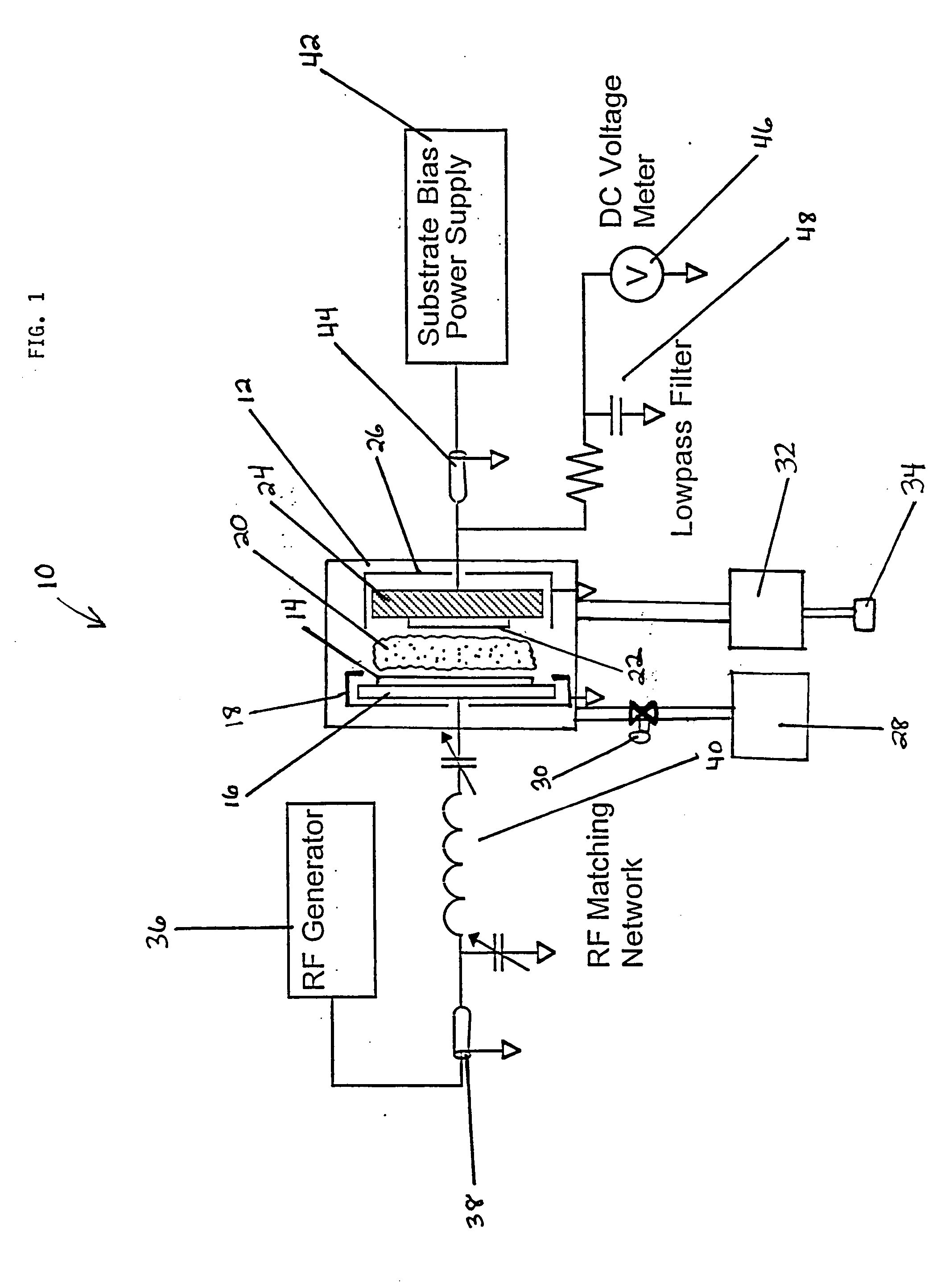Method for producing substantially planar films
a technology of substantially planar films and substrates, applied in the direction of superconductor devices, vacuum evaporation coating, semiconductor/solid-state device details, etc., can solve the problems of large-scale ic fabrication processes, inconvenient use of impedance matching networks, and insufficient high-quality sputter-deposited sio/sub>2/sub> alone,
- Summary
- Abstract
- Description
- Claims
- Application Information
AI Technical Summary
Benefits of technology
Problems solved by technology
Method used
Image
Examples
example 1
[0066] In this example, the apparatus shown in FIG. 1 was used for sputter deposition of a substrate coated with a niobium nitride (NbN) metal layer. First, a niobium nitride (NbN) metal film was sputter deposited in a conventional sputter deposition machine on a silicon wafer having a diameter of about 75 mm and having a thickness of about 0.5 mm. The NbN film used was a polycrystalline superconductive film having a Tc (transition temperature) of 15.4 K (Kelvin).
[0067] The coated silicon substrate had an NbN layer thickness of 500 nm. The roughness of the NbN layer was about 4.2 nm (rms) as measured by atomic force microscope. The peak-to-valley roughness of the NbN film was approximately 15 nm to 20 nm, as measured by atomic force microscope.
[0068] After, the substrate was coated with the NbN film layer, the coated substrate was mounted to a substrate holder within the reaction chamber of the apparatus 10 shown in FIG. 1 The substrate was positioned about 17.8 cm from a silicon ...
PUM
| Property | Measurement | Unit |
|---|---|---|
| Nanoscale particle size | aaaaa | aaaaa |
| Frequency | aaaaa | aaaaa |
| Frequency | aaaaa | aaaaa |
Abstract
Description
Claims
Application Information
 Login to View More
Login to View More - R&D
- Intellectual Property
- Life Sciences
- Materials
- Tech Scout
- Unparalleled Data Quality
- Higher Quality Content
- 60% Fewer Hallucinations
Browse by: Latest US Patents, China's latest patents, Technical Efficacy Thesaurus, Application Domain, Technology Topic, Popular Technical Reports.
© 2025 PatSnap. All rights reserved.Legal|Privacy policy|Modern Slavery Act Transparency Statement|Sitemap|About US| Contact US: help@patsnap.com



